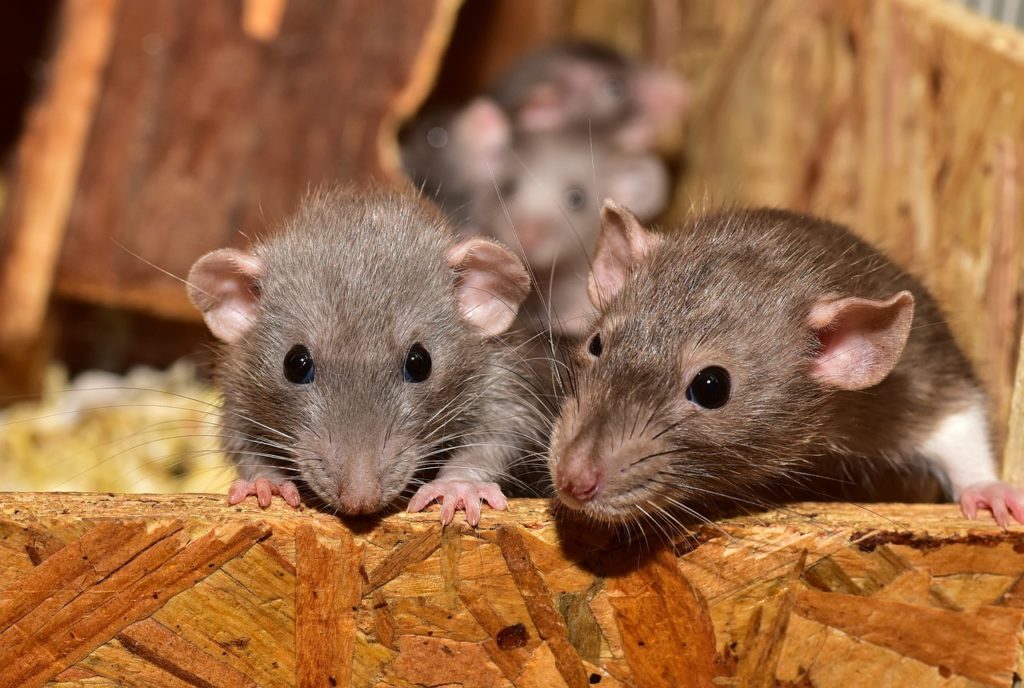Do you suspect a roof rat infestation in your attic? Here’s how to identify these invasive disease-carrying rodents and get effective roof rat removal fast.
Roof rats, also known as black rats, palm rats, fruit rats, and citrus rats, are one of the most annoying, invasive rodent species in Florida. These thin little pests can easily slip into your home without proper prevention measures, making nests in the upper areas and eventually breeding by the dozens each year.
It is important to get rid of roof rats as soon as possible, especially during Florida’s spring and summer seasons when they are most active. Here’s everything you need to know about identifying, exterminating, and preventing a roof rat infestation.
How Do I Know If I Have Roof Rats?
If you’ve lived in South Florida for a while, there’s a good chance you’ve seen a roof rat scurrying somewhere on your property. Typically long and thin with black or dark brown fur, roof rats can grow up to eight inches excluding tail length and have large ears and eyes. Some signs you may have an infestation even if you can’t see them are:
- Noises – Roof rats are nocturnal and can sometimes be heard scurrying in walls, roofs, cupboards, ceilings, and in your attic between dusk and dawn. While one or two rats may be harder to detect, larger infestations can cause a noticeable disturbance.
- Abandoned nests – Roof rats love high places and often make nests in the fruit trees and vegetation around South Floridian homes. If you notice abandoned nests close to doors or windows or in the house, they may have found a way inside.
- Droppings and gnaw marks – Aside from fruits, nuts, insects, and small aquatic life, roof rats will eat through drywall, wood, and other home fixtures to make their nests. They also leave behind dark droppings with pointed ends and urine odor.
- Grease – Grease and dirt buildup on roof rat fur can leave smears and smudges in your kitchen or anywhere else they forage for food.
They can also chew through electrical wires and insulation, ruining appliances and increasing fire danger.
Are Roof Rats Dangerous?
Roof rats in Florida can do far more damage than destroying your home and contaminating your food. These pesky rodents can spread dangerous diseases like leptospirosis, toxoplasmosis, rabies, and hantavirus, plus ticks and fleas that carry viruses and bacteria that can trigger dermatitis, skin irritation, and other conditions.
Roof rats in Florida can do far more damage than destroying your home and contaminating your food. These pesky rodents can spread dangerous diseases like leptospirosis, toxoplasmosis, rabies, and hantavirus, plus ticks and fleas that carry viruses and bacteria that can trigger dermatitis, skin irritation, and other conditions.
Roof rats in South Florida and the rest of the state will frantically seek out steady food and water sources as temperature increases in the summer. Homeowners should do everything they can to ensure they do not find their way inside.
How Can I Prevent a Roof Rat Infestation?
There are several steps you can take to prevent a roof rat infestation in your Florida home, or reduce the likelihood of these pests making nests in your ceiling or attic.
- Clean Up Your Yard – Remove all unnecessary brush, foliage, old wood, and other vegetation where roof rats can make a nest.
- Remove Potential Food and Water Sources – Roof rats will eat almost anything left overnight, from pet food to birdseed and garbage. Seal and store these securely.
- Seal Holes, Cracks, and Crevices – Even nickel-sized openings are enough for roof rats to exploit. Carefully inspect your home for vulnerable areas and get rid of them as soon as possible.
How Do I Get Rid of Roof Rats?
Once roof rats have begun invading your South Florida home, you have three options for getting rid of the rodent: baited traps, poisons, and professional pest removal.
- Roof Rat Traps – when strategically placed, can help homeowners catch roof rats in easily accessible areas for cleanup. However, special care should be taken to keep them out of reach of children and pets, as they can cause physical injury.
- Rodent Poison – is another option that requires serious caution. Not only can rats die in hard-to-reach areas and leave a foul stench if poison traps are not well placed, children and pets can also be accidentally exposed.
Professional Pest Removal
The safest way to remove roof rats from your Florida home and keep them out for good is to get a full-service treatment from a professional pest control provider.
Gregory’s Pest Control, based out of Coral Springs, Florida, has over thirty years of experience effectively removing roof rats and roof rat nests in Broward, Palm Beach, and other South Florida areas. There is also an exclusion service to seal all possible entry points, and ongoing maintenance service to prevent a subsequent infestation.
Visit our rodent control services page to get a free quote or schedule a complimentary pest evaluation visit.

Paul Gregory
Owner/President of Gregory’s Pest Control
I’m a 2nd generation pest control owner who started working for my father in 1999. I was raised in South Florida and feel blessed to call it home for my entire adult life. As a long-term Florida resident, I recognize the challenges of controlling the many different pests that thrive in our subtropical climate. In particular, I understand how difficult it can be to prevent pests from invading our homes and businesses. By helping families solve their pest problems so they can live safer, more comfortable lives, I feel I am also meeting my family’s commitment to help our community. When I’m not out fighting pests, you can find me on the golf course or out on a soccer field where I have been fortunate enough to coach soccer to kids of all ages for the past 20 years.





